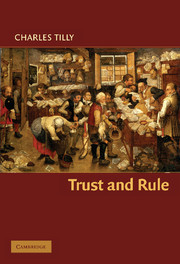6 - TRUST AND DEMOCRATIZATION
Published online by Cambridge University Press: 07 December 2009
Summary
History performed a nasty experiment in Ireland. Through English arms and anglophile landlords' exploitation, it produced two colonies where colonizers and subjects shared broadly similar culture, language, and genetic heritage, where the vast bulk of the population lacked political voice, where religious divisions formed part of governmental structure, but where in two separate regions those divisions produced contrasting alignments vis à vis rulers across the Irish Sea. Centuries before Irish independence, differences between mainly Protestant Ulster and Ireland's overwhelmingly Catholic remainder deeply marked Irish politics.
In both regions, trust networks formed chiefly within channels of religious affiliation. In Ulster, Scottish settlers had planted a Presbyterian church that still retains a substantial following. During the sixteenth century, English conquerors established the Church of Ireland, a counterpart to the Church of England, and granted it the right – like its English counterpart – to draw revenues from the entire population. (For convenience and as a reminder of its special standing, I will call the Church of Ireland “Anglican.”) In Ulster and elsewhere, the rest of the population stuck mainly with the Roman Catholic Church. Starting with England's sixteenth-century conquests, vitriol and violence flowed in both directions across Irish regional and religious boundaries. On one side occurred extensive integration of Protestants into the system of rule; on the other, enforced segregation of Catholics.
- Type
- Chapter
- Information
- Trust and Rule , pp. 125 - 150Publisher: Cambridge University PressPrint publication year: 2005

